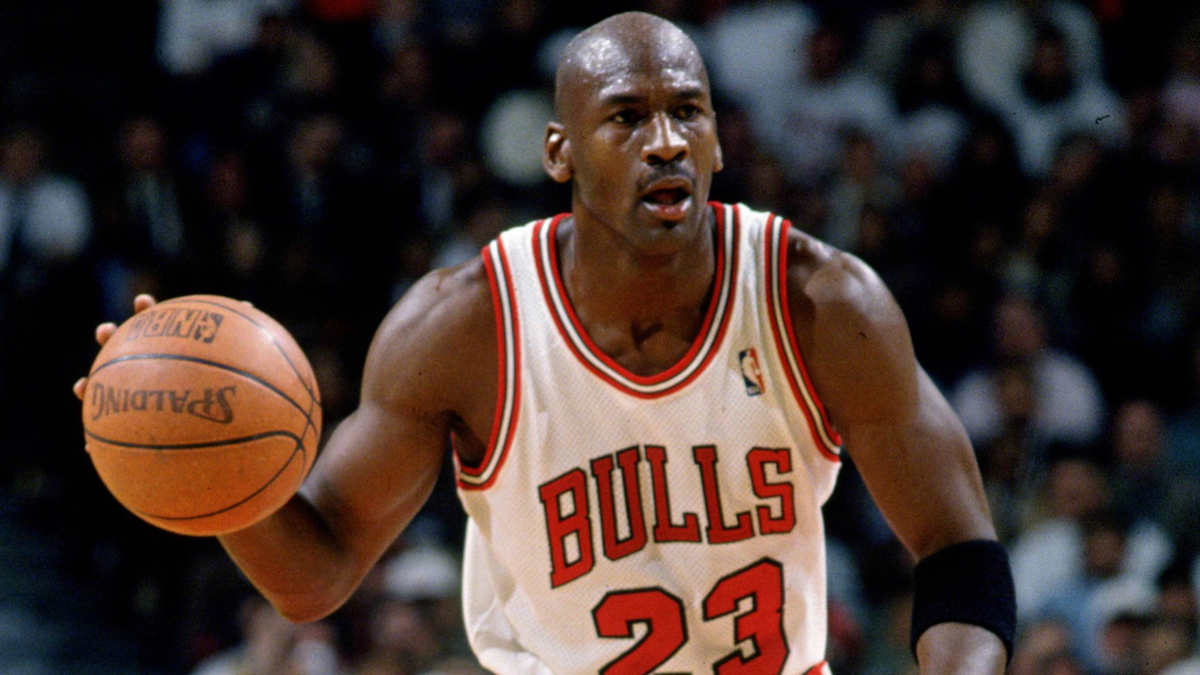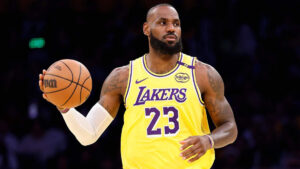In 2025, Michael Jordan’s net worth is estimated to be a staggering $3.5 billion, according to the latest data from Forbes. But here’s the thing — this isn’t just another headline about a retired athlete cashing in on endorsement deals. Jordan’s wealth tells a far bigger story. It’s the blueprint for turning legacy into leverage, talent into ownership, and a name into a long-term economic engine. While many athletes hustle for post-career relevance, Jordan redefined what it means to own your brand. From the hardwood to boardrooms, from signature sneakers to billion-dollar exits, his journey is less about nostalgia and more about strategy. This is the fortune of a man who never stopped playing — he just changed the arena.
Why Michael Jordan’s Wealth Still Dominates in 2025
Even in 2025, more than two decades after his final NBA game, Michael Jordan stands as the gold standard for athlete wealth, not because he made the most during his playing years, but because he built a machine that never stopped printing. While today’s stars chase brand partnerships and launch business ventures, Jordan quietly set the mold years ago, engineering a model of financial longevity that’s become the North Star for sports moguls everywhere.
His net worth isn’t just high — it’s structured differently. Jordan doesn’t rely on sporadic endorsement deals or risky startups. Instead, his fortune flows from deeply entrenched licensing agreements and equity stakes that pay out like clockwork. The most obvious example? The Jordan Brand, which earns him an estimated $150 million annually in royalties from Nike, money that comes in whether he shows up to a boardroom or not. It’s the textbook definition of passive income.
But the brilliance lies in how early he understood the power of ownership. Long before it was fashionable, Jordan negotiated for a share of the pie instead of a flat fee. He didn’t just lend his name — he helped shape the brand. That distinction has made all the difference.
In an era where athletes are more brand-conscious than ever, Jordan isn’t just keeping pace — he’s still ahead of it. His wealth isn’t frozen in the past; it’s a living, compounding asset that reflects the foresight of someone who didn’t just want to win on the court, but at the bank too.
Beyond Basketball — The Power of Longevity in Earnings
Michael Jordan didn’t just retire a champion — he retired into a financial model that most athletes still struggle to replicate. In 2025, as younger stars scramble to monetize their fame, Jordan’s income keeps flowing from deals inked decades ago. His earnings are no longer tied to performance, appearances, or even relevance in today’s NBA — they’re the product of a well-architected income ecosystem rooted in royalty, licensing, and long-term brand rights.
At the core is his licensing deal with Nike. Unlike traditional endorsements where athletes get paid a fee to wear or promote a brand, Jordan secured a perpetual revenue stream — a royalty model. Every time a Jordan sneaker drops, whether it’s a retro reissue or a new collaboration, a percentage lands directly in his pocket. It’s the kind of compounding income that doesn’t just preserve wealth — it grows it, quietly and consistently.
What’s more, Jordan retains control over his name and likeness, ensuring that no product bearing his identity circulates without his involvement. That’s rare — and valuable. These rights allow him to keep earning, licensing, and influencing without ever stepping back into the spotlight.
In 2025, this kind of financial longevity resonates across industries. From athletes to YouTubers to entrepreneurs, legacy monetization is the new finish line. And Jordan? He reached it first, not by chasing trends, but by building a timeless revenue engine — one rooted in brand ownership, identity control, and scalable value. His story isn’t just historic — it’s a blueprint for modern wealth.

Jordan Brand: The Billion-Dollar Engine Driving His Empire
In 1984, a 21-year-old rookie out of North Carolina entered the NBA with raw talent, unshakable confidence—and no shoe deal. Converse and Adidas passed. Nike, then a struggling runner’s brand, took a chance. What followed wasn’t just a business deal; it was a cultural detonation. Michael Jordan’s first sneaker, the Air Jordan 1, banned by the NBA, made headlines—and made history.
The original Nike deal was worth $500,000 a year over five years, but the real game-changer was equity: a cut of every shoe sold. It was unheard of at the time. Jordan didn’t just endorse the shoe; he embodied it, and soon, so did millions of fans. Sneaker sales hit $100 million in year one. That’s not a partnership—that’s brand fusion.
Fast forward to 2025, and Jordan Brand is a multi-billion-dollar juggernaut, pulling in $6.6 billion in annual sales for Nike, according to their latest filings. Jordan personally earns an estimated $150 million per year in royalties alone, more than he made in total from his NBA contracts.
But beyond the numbers lies something rarer: brand autonomy. Jordan isn’t just a retired player with a shoe line — he’s the only athlete whose sub-brand rivals the parent company’s flagship. His Jumpman logo has transcended sports to become a symbol of ambition, style, and myth.
From an unproven rookie to the architect of his economy, Jordan’s brand legacy isn’t just profitable — it’s generational. And it all started with a bet that Nike—and history—will never regret.
Nike’s Greatest Bet — And Why It Still Pays Off
When Nike signed Michael Jordan in 1984, it wasn’t just unconventional — it was borderline reckless. At the time, Nike was losing its grip on the running market, and Jordan, though promising, was still unproven. Adidas was his first choice. Converse had the NBA legends. Nike was offering something else: a vision. They didn’t want Jordan to wear a shoe. They wanted him to be the shoe.
The deal was bold: $500,000 annually (unheard of for a rookie), his signature line, and — most importantly — a cut of the profits. Nike expected to generate $3 million in sales in the first three years. Instead, the Air Jordan line raked in $126 million in year one.
That deal changed sports marketing forever. It turned athletes into brands and sneakers into status symbols. But here’s the kicker: it still pays off in 2025, not just for Nike, but for Jordan — to the tune of $150 million a year in royalties, according to Forbes.
Today, Jordan Brand operates as a standalone division under Nike, with its own design teams, marketing budgets, and celebrity collaborators. From the Travis Scott drops that sell out in seconds to the annual retro reissues that dominate resale markets, Jordan Brand is more than a shoe — it’s an economic ecosystem.
Nike’s bet didn’t just pay off — it transformed how companies view talent and equity. And in an era when athletes are clamoring for ownership stakes in brands, Jordan’s 1984 deal remains the blueprint.
As ESPN’s Darren Rovell once put it, “Jordan didn’t just change the game — he monetized it like no one before or after.” Forty years later, the swoosh and the Jumpman are still the most valuable handshake in sports business history.
Also See: Top 50 Richest Athletes in The World
From Player to Power Broker: Inside Jordan’s Business Empire
NBA Team Ownership and the $3B Hornets Sale Payout
In 2010, Michael Jordan made history—not with a dunk, but with a deal. The kid from Wilmington became the first former player to become majority owner of an NBA team, buying a controlling stake in the Charlotte Bobcats (later rebranded the Hornets) for a reported $275 million. It wasn’t glamorous at the time; the team struggled on the court and at the box office. But Jordan was playing a long game.
Fast forward to 2023: MJ sold his majority stake for an estimated $3 billion valuation, retaining a minority share. That’s a 10x return on investment and a textbook example of wealth through equity, not salary. The deal didn’t just add to his fortune—it redefined it. For an athlete who once dominated the game, Jordan now showed how to own it.
With that sale, Jordan joined the elite club of billionaires who made their fortune not just on the court, but through it.
Other Investments That Quietly Built His Wealth
While the Jordan Brand and NBA legacy dominate headlines, some of Michael Jordan’s smartest wealth plays happened quietly, off the hardwood. Take Cincoro Tequila, for example—a luxury spirits brand he co-founded with fellow NBA owners. Jordan isn’t just a face on the bottle; he’s deeply involved in taste-testing and branding. The tequila’s sleek design and high-end price tag mirror MJ’s precision and exclusivity. As of 2025, Cincoro’s soaring sales suggest he’s found yet another winning lane.
Then there’s DraftKings, the sports betting giant. Jordan became an equity investor and board advisor in 2020, just as online wagering took off. As the platform exploded in value, so did his stake—quietly adding millions to his portfolio.
Real estate? Jordan owns luxury properties from Florida to North Carolina, including a palatial estate outside Charlotte. These aren’t just homes—they’re hard assets that appreciate, just like everything Jordan touches. In business, as in basketball, MJ doesn’t force the play—he waits for the perfect shot.
How Does Michael Jordan’s Net Worth Stack Up in 2025?
In the billionaire club of iconic athletes, Michael Jordan still sits at the top—but what makes his wealth unique isn’t just the number, it’s the architecture behind it. LeBron James, for instance, reached billionaire status through active investments in media (SpringHill Company), sports (Fenway Sports Group), and endorsements—but he’s still in the game, building while playing. Tiger Woods amassed his fortune through global endorsements and course design, but much of it was tied to visibility and peak performance.
Magic Johnson, a business legend in his own right, diversified into real estate and franchises early on. But unlike Magic or Tiger, Jordan’s crown jewel—Jordan Brand—continues to scale without his daily input.
What sets MJ apart is ownership tied to personal mythology. His brand doesn’t just exist in memory—it actively drives revenue. Jordan turned identity into equity, proving that when you own the story, you never stop earning from it.
Compared to NBA Legends and Modern Moguls
When comparing Michael Jordan’s wealth to other NBA legends and moguls, the numbers are only part of the story—the real takeaway is in how those fortunes were built.
| Name | Estimated Net Worth (2025) | Key Income Sources |
| Michael Jordan | $3.5 billion | Jordan Brand royalties, team sales, investments |
| LeBron James | $1.2 billion | Endorsements, SpringHill Co., Fenway Sports equity |
| Magic Johnson | $800 million | Real estate, franchise ownership, partnerships |
| Shaquille O’Neal | $500 million | Endorsements, restaurant chains, broadcasting |
What sets Jordan apart is scalability without dependency. LeBron is actively building his empire—he’s producing films, buying into sports teams, and shaping his legacy in real time. But he’s also highly involved. Jordan, by contrast, built a self-sustaining ecosystem. Jordan Brand earns hundreds of millions annually with little hands-on work from him. It’s passive income at a level few athletes ever achieve.
Magic Johnson, a pioneer of athlete entrepreneurship, leaned into real-world businesses—Starbucks licenses, movie theaters, and insurance. He scaled impressively, but most of his ventures weren’t tied to a global brand identity.
Jordan’s genius lies in tying his persona to a product with permanent relevance. His sneakers sell to generations who never saw him play. That’s emotional equity turned financial. His wealth is no longer just about being the best in basketball—it’s about being the best at becoming more than basketball.

Timeline of a Fortune: Key Milestones in Michael Jordan’s Wealth Journey
1984 – Nike signs rookie Jordan to $500K/year deal + revenue share.
The foundation of a billion-dollar brand is born.
1985 – Air Jordan 1 releases.
Generates $126M in first year—shattering expectations.
1991–1998 – Wins six NBA titles.
Championships fuel global brand recognition and endorsement power.
1997 – Signs one of NBA’s first $30M+ single-season contracts.
Back-to-back years making $30M+ from the Bulls.
2006 – Buys minority stake in Charlotte Bobcats.
Begins move from player to owner.
2010 – Becomes majority owner of the Hornets.
First former player to own an NBA team.
2020 – Joins DraftKings as investor + advisor.
Expands portfolio into tech and sports betting.
2023 – Sells majority Hornets stake at $3B valuation.
Scores one of the most profitable exits in sports ownership.
2025 – Net worth hits $3.5B.
Jordan Brand brings in $150M+ per year in royalties alone.
Also See: Top 50 Richest NBA Players in the World
What It’s Like to Work With (or for) Michael Jordan
“Working with Michael isn’t like working with a typical athlete,” a former Nike executive once told me over lunch. “He doesn’t chase deals—he builds them.”
That line stuck with me. Everyone knows the mythic competitor on the court, but behind the scenes, Jordan is just as exacting. Multiple former business partners describe a man who’s intensely focused, borderline obsessive about detail, and allergic to anything that feels off-brand. One investor in Cincoro Tequila said MJ personally vetoed bottle designs that didn’t “feel premium enough.”
He’s not loud in meetings. He’s sharp, quiet, and surgical. When he speaks, people lean in—not because he’s famous, but because he rarely wastes words.
He doesn’t do vanity projects. If his name is on something, it’s because he’s deeply involved. And that, more than anything, explains the staying power of his empire. Jordan doesn’t just play to win—he plays to own the outcome.
The Intangibles: Brand, Aura, and Cultural Permanence
Michael Jordan isn’t just wealthy—he’s woven into culture. Decades after his final game, kids who never saw him play still beg for his sneakers. Why? Because his name doesn’t just represent skill; it symbolizes greatness. That’s not financial capital—it’s emotional equity.
Think of the ripple effects: the “Be Like Mike” jingle became a generational mantra. Space Jam made him a cross-dimensional icon. Today, his highlights live in endless Instagram edits, his shrug meme outpaces entire marketing budgets, and his shoes remain the most coveted drops on the planet.
Jordan’s value isn’t locked in nostalgia—it’s reissued like his sneakers, again and again. His image speaks to precision, intensity, and ambition. Owning something with the Jumpman logo isn’t about fashion. It’s about being part of something.
That’s the difference. MJ doesn’t just sell products—he sells aspiration. And in 2025, that aspiration is still priceless.
Why Michael Jordan’s Fortune Reflects More Than Wealth
Michael Jordan’s fortune isn’t just a scoreboard of dollars—it’s a blueprint for building enduring value from personal identity. From slam dunks to boardroom deals, his journey shows how greatness on the court can evolve into lasting influence off it. He didn’t just cash checks—he created ecosystems, brands, and standards that outlive the game itself.
In a world where athletes, creators, and entrepreneurs alike chase relevance, Jordan mastered something rarer: permanence. His wealth reflects not just earnings, but ownership—of his image, his impact, and his future.
For anyone navigating the modern economy of attention and authenticity, Jordan’s empire is a powerful reminder: the most valuable thing you can build is a legacy that pays you back long after the spotlight fades.
Nishant is a digital strategist and celebrity finance analyst with over 15 years of experience in SEO-driven content. As Founder of TheNetWorths.com, he creates high-authority profiles on wealth, branding, and cultural influence.

















2 thoughts on “Michael Jordan Net Worth 2025: How the GOAT Built a $3.5 Billion Empire”